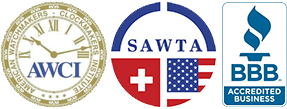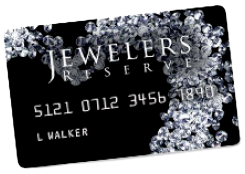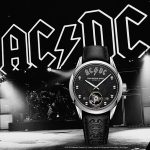TAG Heuer, acclaimed as one of the world’s leading luxury watch brands is no novice when it comes to timepieces. The company offers a robust history of innovation, rooted connections with sports timing and automobile racing, and more recently, revolutionary developments in the field of ultra-fast mechanical chronographs, an ingenious tourbillon watch. In this article we will go in depth into the history of TAG Heuer and other things that you may or not know about this world-acclaimed company of luxury timepieces.
- The Beginning
In 1860, Edouard Heuer founded the Heuer Watch Company located in St-Imier, in the Swiss Jura region. Edouard Heuer and his company soon built a reputation for his quality workmanship and precision timekeeping. Alongside, a series of technical innovations in the 1880s, this led the company to becoming a specialist in the field of timing sporting events. In the 1920s, Heuer watches were used at the Antwerp, Paris and Amsterdam Olympics.
In 1933, the Heuer Company wanting to get into racing launched the Autavia, the first dashboard stopwatch designed for racing cars. From then forward, history was made.
In 1985, Heuer was acquisitioned by TAG Group (Holdings) S.A. The TAG Group combined with the Heuer brand, created the TAG Heuer company that we know today.
In 1999, LVMH purchased the TAG Heuer subsidiary. However, through all of the company’s transitions; the company’s affinity with precision timekeeping in sports and with automobile racing continues on to this day.
- Chronograph
Along time ago, when precise engineering trumped marketing concerns, movement designers looked into developing calibers with fewer moving parts, in order to make them more reliable and service friendly. In 1887, Edouard Heuer developed and patented the oscillating pinion. This simplified the chronograph and this construction method is still used by major movement manufacturers even till today.
The oscillating pinion couples and decouples the chronograph, or stopwatch, mechanism and the regular timekeeping gear train that powers it. The oscillating pinion replaced a more complex system which simplified the manufacturing, assembly, adjustment and service process. Yet it still delivered excellent timekeeping and most of all reliability. With this innovative development, it allowed for more mechanical chronographs to be produced at a lower cost.
- Speed
Over 100 years ago, another major technical feat was accomplished in 1916, when Charles-Auguste Heuer launched the original Mikograph. The Mikograph was the first mechanical stopwatch with the ability to measure 1/100thof a second. In order to be able to accomplish this, the movement’s rate was 360,000 yph; which was ten times faster than the 36,000 yph chronographs. The original Mikrograph revolutionized timekeeping for sports and thus is how Heuer became the official stopwatch for the 1920 Olympics.
- Outer Space
Heuer was the first Swiss watch to ever reach outer space. On February 20th, 1961, John Glenn flying the Mercury Friendship 7 mission, made three orbits around the Earth wearing a Heuer 2916A stopwatch on top of his spacesuit, held in place by a custom-made elastic strap on his wrist. The iconic watch served as a mission back-up timer. Today, you can find this very same watch on display at the National Air & Space Museum in Washington D.C.
- The Carrera
One of the most iconic models by TAG Heuer is the Carrera, which are associated with automobile racing. Jack Heuer suggested the name in 1963 shortly after taking control of the company. The name comes from the Carrera Panamericana, a very dangerous race that was run on public roads in Mexico between 1950 to 1954.
Looking to create a watch for race car drivers, it had to be perfectly legible and rock solid in order to withstand the intense vibrations drivers experienced during high-speed races.
- The Race to the Chronograph
When automatic winding wristwatches were first introduced into the market, they sold out constantly, leaving manual winders gathering dust on retailers’ shelves. With this void, it was recognized for the need of an auto-wind chronograph. Three companies and consortiums began the undertaking to develop such a movement. None of them area of the others’ efforts, this set up a competition to see which company would be able to reach the market first.
The competitors being Seiko, Zenith, and the third was a collaboration that involved Heuer, Breitling and Buren. The planned announcement was to be made at the Basel watch show in March of ’69. However, Zenith at an attempt to beat them to the punch, revealed the El Primero in January of ’69. Heuer and its partners held to their original schedule, making the announcement at Basel in March as planned. They were able to back up their claim by presenting hundreds of working watches, demonstrating serial production capability. However, at the show, Zenith had only a few prototypes available. With the launch of the Caliber 11 by Heuer, it staked its claim to history as the developer of the first automatic winding chronograph caliber.
- Racing
There are multiple Heuer timepieces that are closely associated with automobile racing, however, perhaps none more so closely related than the Heuer Monaco. Steve McQueen made this timepiece famous when he wore it in the 1971 film Le Mans. McQueen’s role as the driver Michael Delaney, McQueen sought advice from his friend and racing driver, Jo Siffert. In the film, McQueen wore Siffert’s driving suit, which carried the Chronograph Heuer logo. When it came time to choose his watch for the role, McQueen went with the Monaco, and the rest is history. Today, the model 1133 carries the collector nickname “McQueen Monaco”.
- Jack Heuer
Jack Heuer took control of the Heuer Company in 1962 and that is where he stayed until the acquisition by TAG Group in 1985, after which he left to join the electronic industry. Jack’s stewardship over the years is what put the brand on the map. Among many other things, Jack oversaw the Carrera development and launch and the Calibre 11 development program. Jack was also there when Steve McQueen donned the Monaco for the film Le Mans. Jack also served between 1971 and 1971 when the company served as the official timer for Formula 1 racing.
However, in 2001, Jack Heuer returned to TAG Heuer and served as Honorary Chairman. With his return, TAG Heuer reached new heights. On November 18th, 2013, the day before his 81stbirthday, Jack Heuer retired from TAG Heuer.
- The Monaco V4
The Monaco was already an established and famous brand. However, in 2004, TAG Heuer brought it to a new level with the launch of the Monaco V4 concept watch as Baselworld. CEO Jean-Christophe Babin intended to make a statement with the V4. That statement being that TAG Heuer will climb to new heights and continue developing cutting edge, avante-garde mechanical movements.
However, the V4’s introduction was not an easy one. It took quite a few years in order to perfect the design and the first Monaco V4 was sold at the 2009 Only Watch charity auction, appropriately held in Monaco. Since that initial sale, several limited edition series have sold out.
The Monaco V4 proved such a challenge because its movement represented a major break from traditional watchmaking. Usually, gear trains and wheels use teeth for movement, the V4’s movement, however, was belt-driven, inspired by an automobile engine. Many thought it would never work. However, TAG Heuer solved the problems, affirming the testament of the brand’s newly developed capabilities, much of which was thanks to a man named Guy Semon.
- Guy Semon
At the turn of the century 36,000 yph movement, capable of measuring tenths of a second, was considered fast until came along Charles-Auguste Heuer’s original Mikograph at 360,000 yph, capable of measuring one-hundreds of a second. After the release of the original Mikograph there wasn’t really any innovation in the realm of increasing the speed of the stopwatch. That was until an engineer-pilot-physicist named Guy Semon joined TAG Heuer.
After he initially solved the challenges with the Monaco V4, he went on to recreate the Mikograph, measuring 360,000 yph, or 1/100thof a second. The Mikrotimer, 3,600,000 yph, or 1/100thof a second and the Mikrogirder, 7,200,000 yph, or 1/2000thof a second.
Guy Semon was able to accomplish these ultrafast rates by designing what he called “dual architecture” movements. Each movement has two separate mainspring barrels powering separate gear trains regulated by separate escapements, each with a different frequency. The slow one handles regular timekeeping, and the fast one controls the chronograph. The Mikrogirder, however replaces the traditional escapement with a series of three tiny, ever-faster oscillating blades to measure time at rates that would have sounded insane not so long ago. In order to ascertain just how fast it is, consider that the Mikrogirder’s central chronograph seconds hand spins around the dial 20 times per second, rendering it invisible to the naked eye while in motion.
About Matheu’s Fine Watches & Jewelry
Matheu’s Fine Watches & Jewelry has been providing quality products and professional services to the metropolitan Denver, CO area since 1951. The very first watch repair and service facility ever opened in Colorado. Dan Matheu, watchmaker, pioneered watch repair and services in Colorado. Today, Scott Matheu is at the helm steering Matheu’s Fine Watches & Jewelry. With his vision, Scott opened a watch store in Highlands Ranch and has made Matheu’s Fine Watches & Jewelry not only one of the largest watch stores to provide watch repair in Highlands Ranch, CO but also the entire state.
Whether you are in need of watch repair in Highlands Ranch, CO, watch engraving, or even if you have an antique watch that you would like appraised, you can count on Matheu’s Fine Watches & Jewelry to provide you with superior service each and every single time. With one of the largest service centers in the metropolitan Denver, CO we are not only able to provide watch repair in Highlands Ranch, CO but to the entire 50 states as well.
Matheu’s Fine Watches & Jewelry is also a factory authorized service center for Cartier, Tag Heuer, Philip Stein, Swiss Army and many more brands. When you use Matheu’s Fine Watches & Jewelry for your watch repair in Highlands Ranch, CO, you can rest assured knowing that you will receive our (3) three-year warranty on major watch repairs that we provide. If you are looking for the best watch repair service center throughout the United States, you cannot go wrong when you choose Matheu’s Fine Watches & Jewelry. With certifications from not only AWCI but SAWTA too, we not only stand out from the pact; we lead it.




